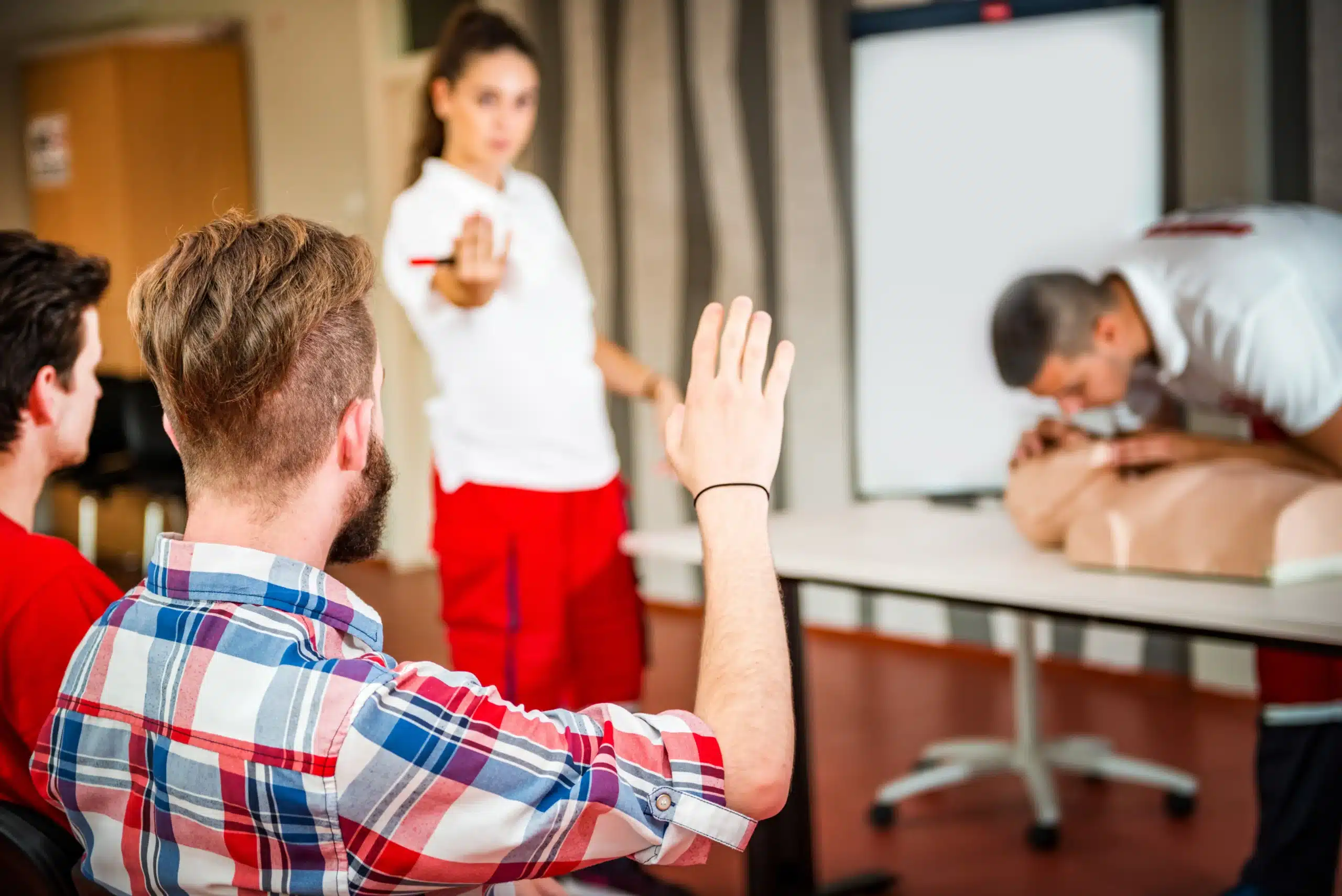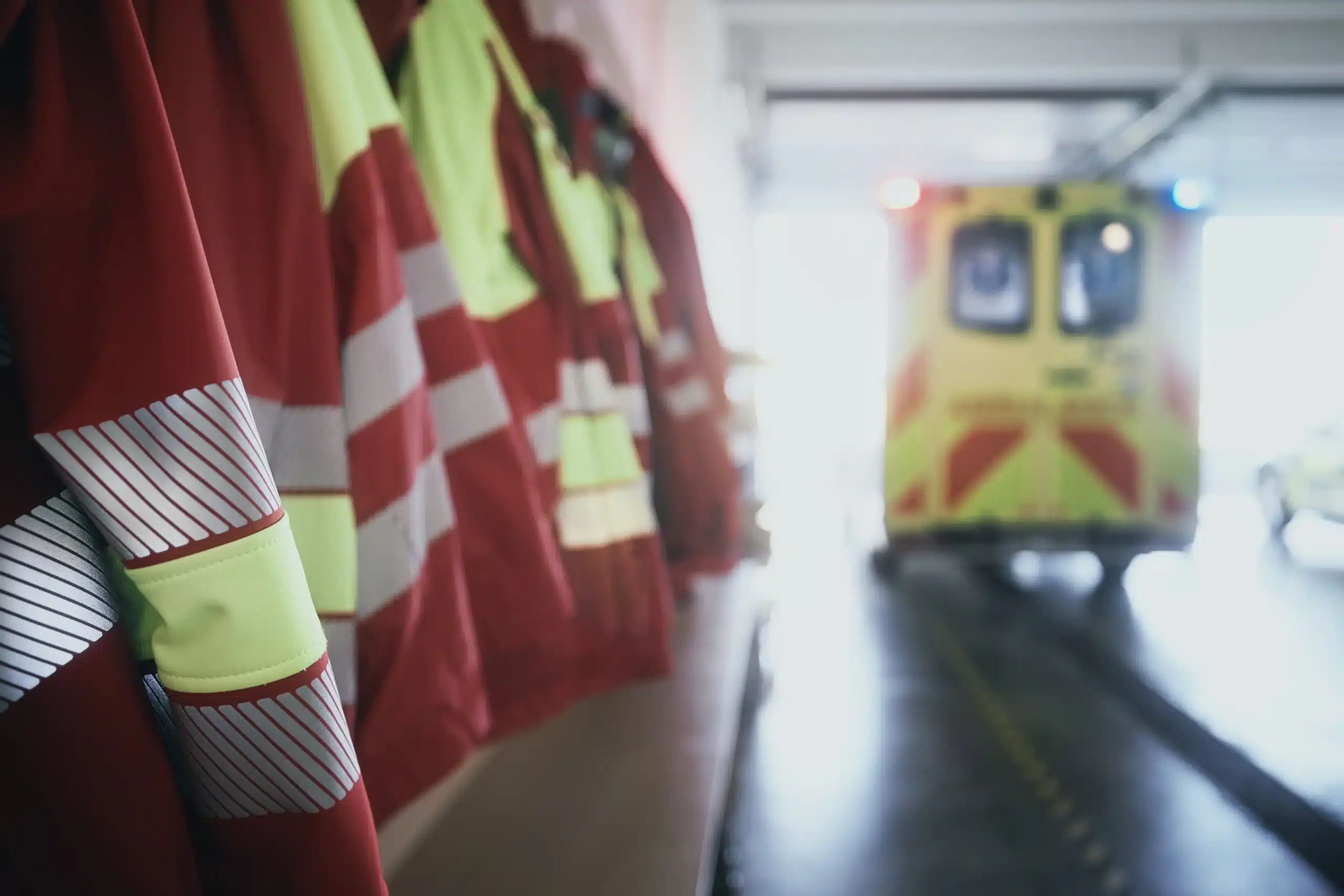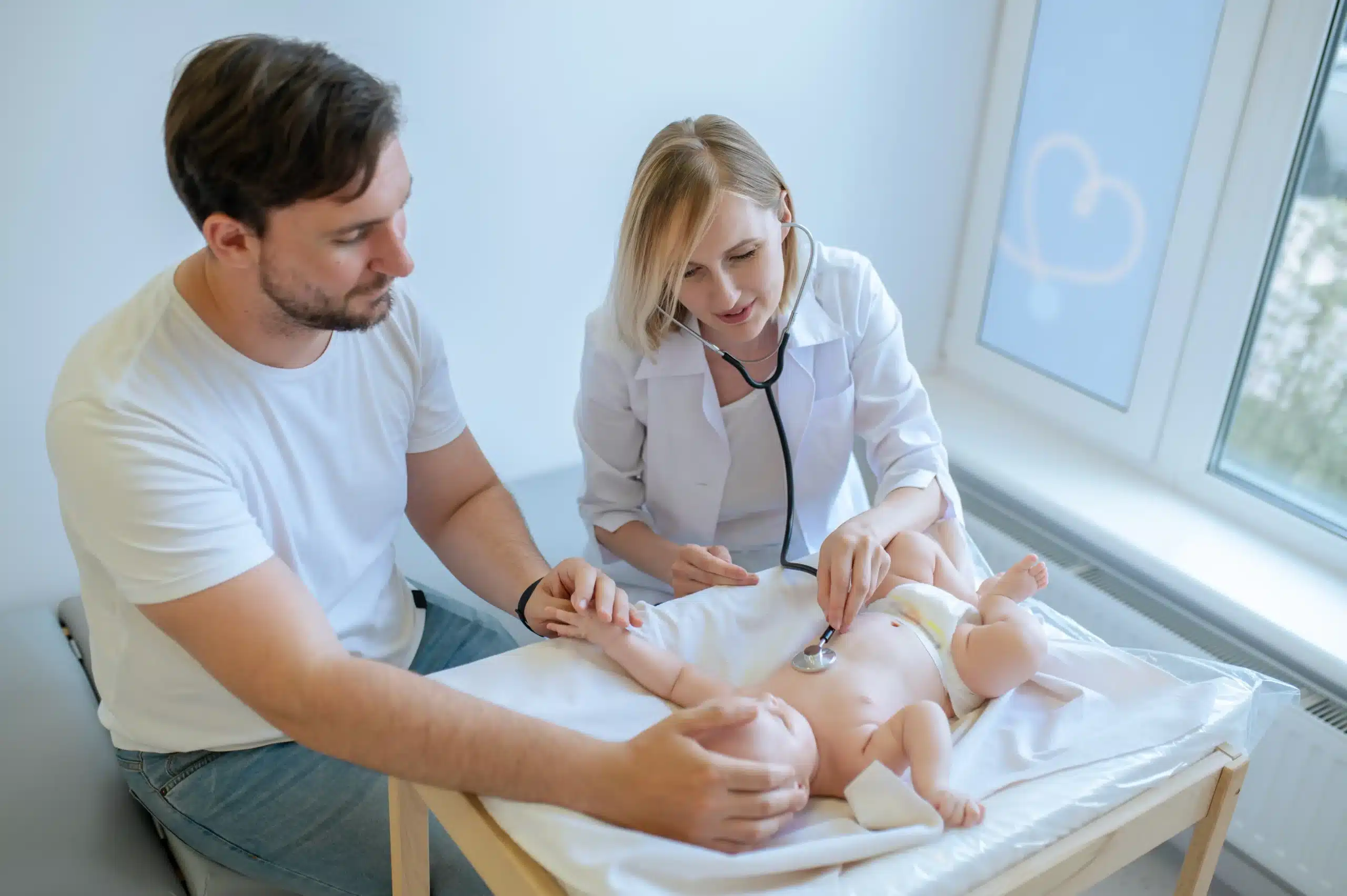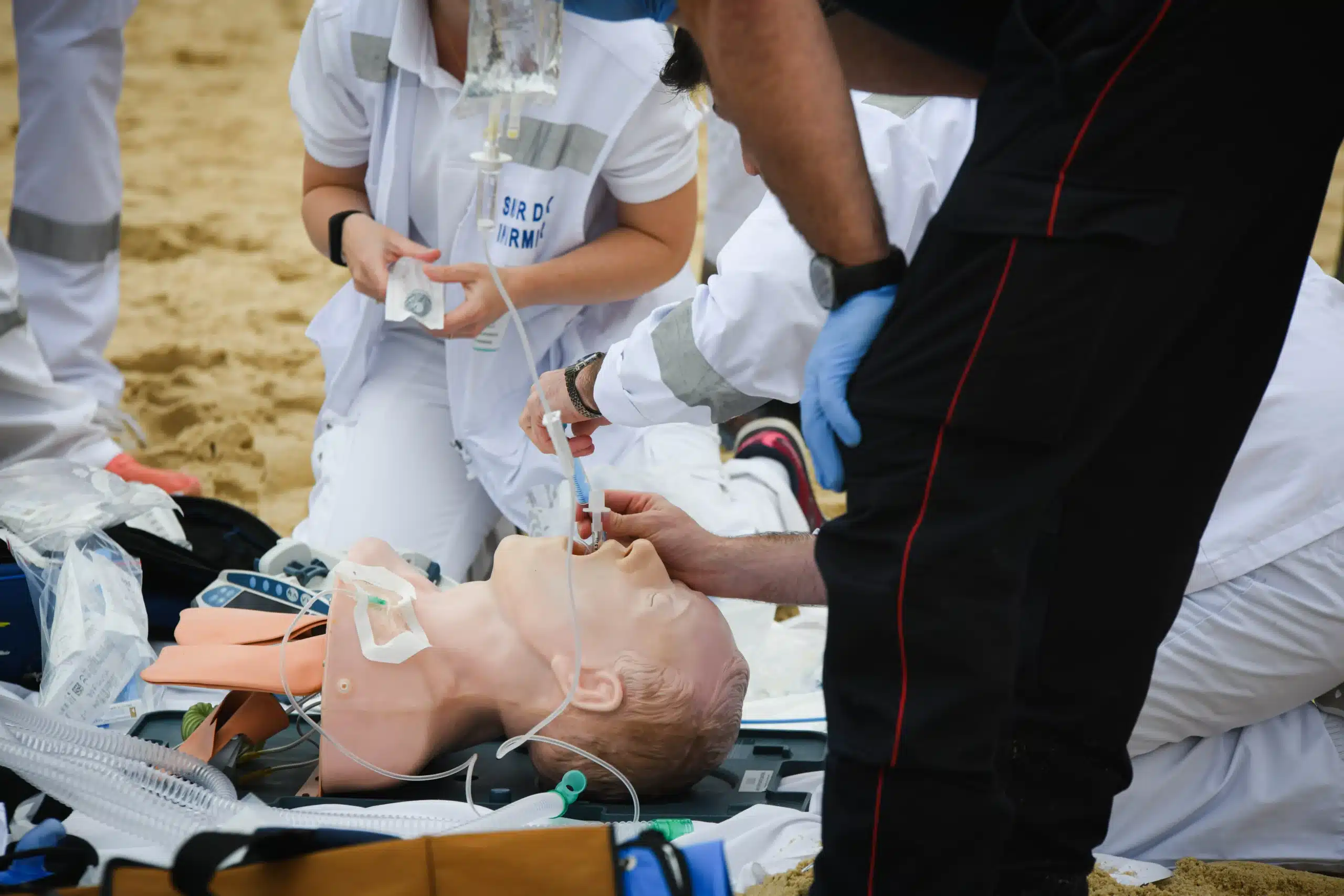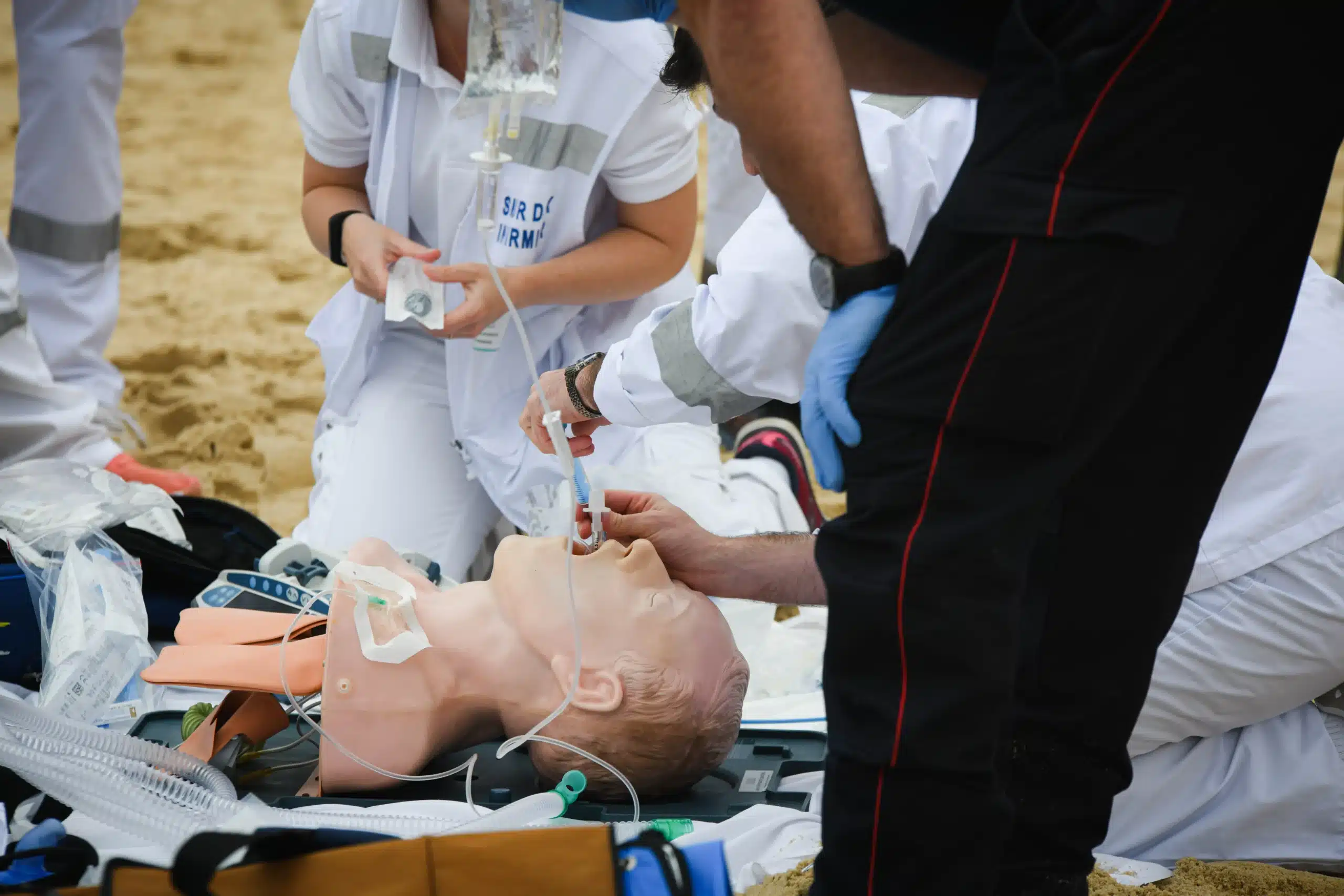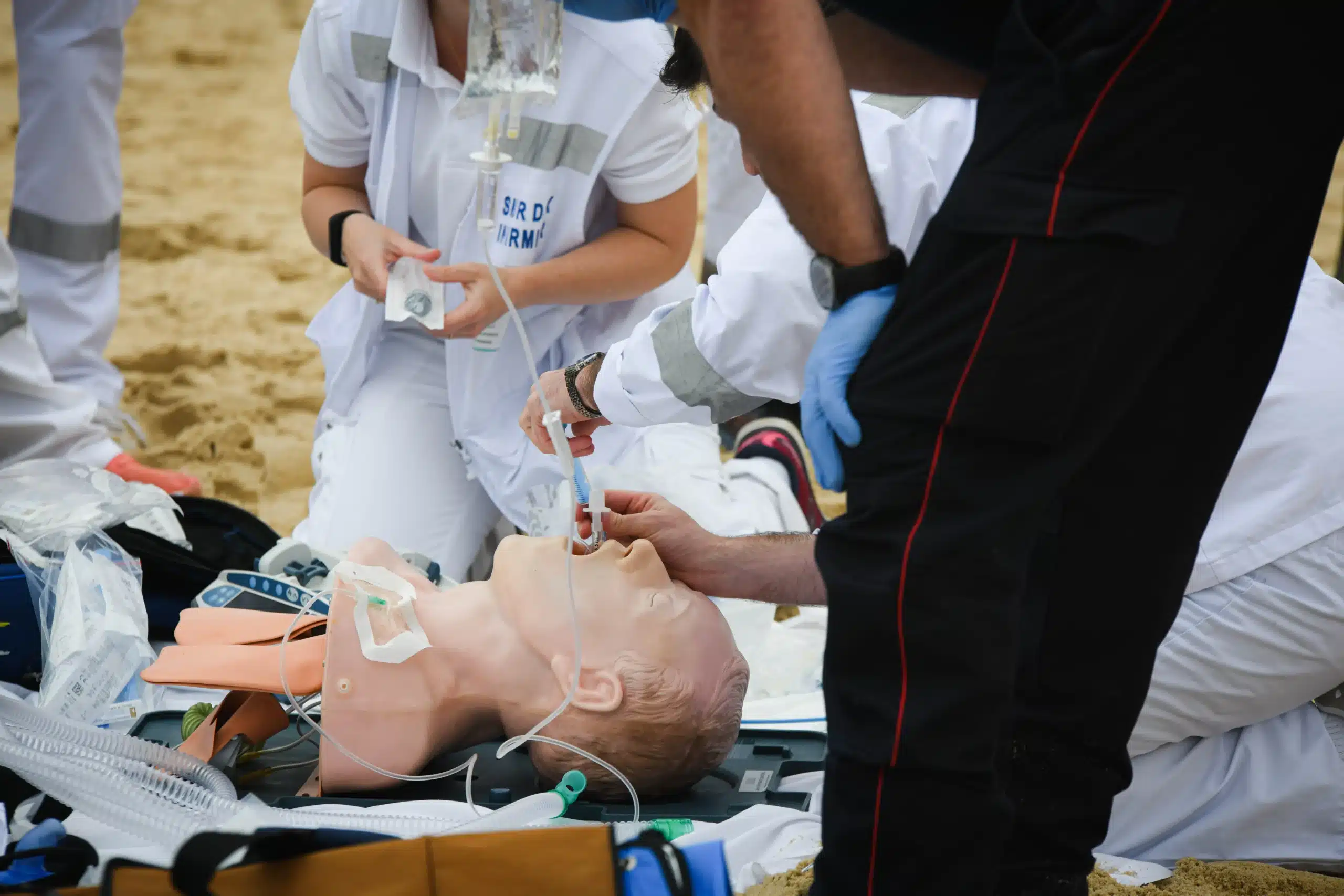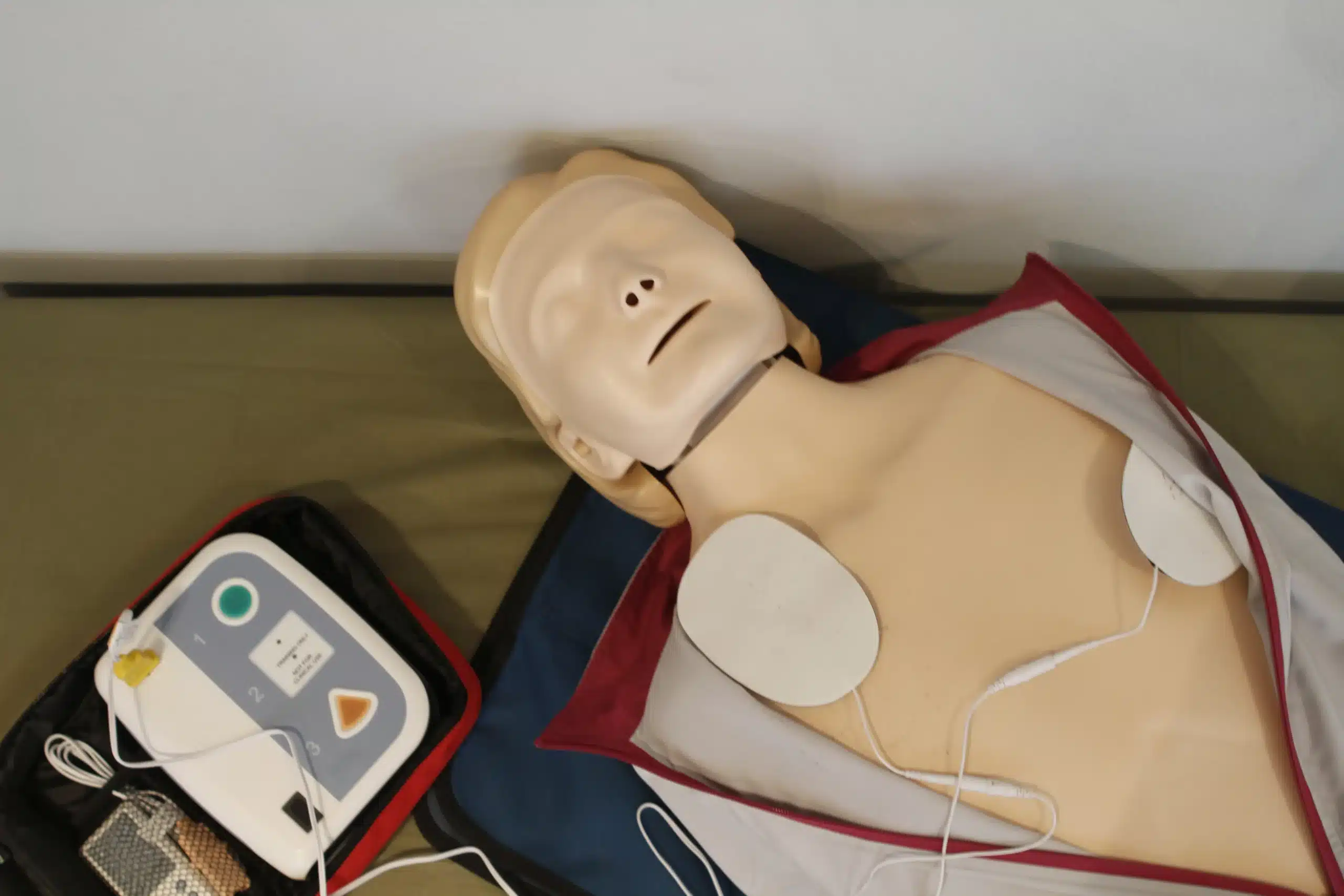Empowering yourself with life-saving skills is one of the most valuable things you can do. If you’ve been typing “CPR certification near me” into your search bar, you’re already on the path to making a real difference in your community. This guide will help you understand the importance of CPR certification, explore the various training options available, and guide you through the process of finding the right course for your needs. We’ll cover everything from the basics of CPR to more specialized certifications, ensuring you have the knowledge and confidence to respond effectively in an emergency. Whether you’re a healthcare professional, a caregiver, or simply someone who wants to be prepared, this guide is your starting point.
Key Takeaways
- CPR certification builds confidence and equips you for emergencies. Whether you need it for work or personal preparedness, find a course format—in-person, online, or blended—that suits your lifestyle.
- Select a CPR course that aligns with your goals. Consider the course content, instructor qualifications, and accreditation from organizations like the AHA or Red Cross. Compare costs and explore options like group discounts.
- Stay current with CPR guidelines and renew your certification every two years. Regularly refresh your skills and knowledge to maintain your preparedness and provide effective assistance when needed.
What is CPR Certification & Why Does it Matter?
CPR certification equips you with the skills to respond effectively during cardiac arrest or other breathing emergencies. While you don’t technically need official certification to perform CPR in a real emergency, a structured CPR course ensures you’re well-versed in these critical techniques. It’s about confidently providing assistance when it matters most. CPR involves chest compressions and rescue breaths—skills anyone can learn, regardless of medical background.
Getting certified demonstrates a commitment to preparedness and builds confidence. Plus, some workplaces or volunteer organizations require formal CPR certification. Even if it’s not mandatory for you, the training provides a solid foundation in life-saving techniques. CPR certification courses cover essential skills and best practices, giving you the knowledge and practice to make a real difference. It’s about being prepared and empowered to act when every second counts.
CPR Certification Courses: Which Type is Right for You?
Choosing the right CPR certification course depends on your learning style, schedule, and preferences. Let’s explore the different types available to help you decide which one best fits your needs.
In-Person CPR Training
In-person CPR training offers a hands-on learning experience guided by certified instructors. This approach is ideal for those who value direct interaction and physical practice. You’ll have the opportunity to ask questions, receive immediate feedback, and practice your skills in a realistic environment. This hands-on training is crucial for mastering proper techniques and building confidence in emergency situations. Pleasanton CPR Classes offers a variety of in-person CPR courses designed to meet diverse needs.
Online CPR Courses
Online CPR courses provide flexibility and convenience, allowing you to learn at your own pace and from anywhere with an internet connection. These courses typically involve video lessons, interactive exercises, and online assessments. While online learning offers flexibility, remember that certifications require an in-person skills test to demonstrate proficiency. Online CPR training is a great option if you have a busy schedule or limited access to training centers.
Blended Learning CPR
Blended learning CPR courses combine online learning with in-person skills practice. This format allows you to complete the coursework online at your convenience and then attend an in-person session to practice and test your skills. Blended learning offers a balance of flexibility and hands-on training, making it a popular choice. Some programs are evenly balanced between online and in-person training; but even an in-person class might include an online training module to practice information you learned in class. Check with your chosen provider to see if they offer blended learning options.
Find CPR Certification Providers Near You
Finding the right CPR certification course often starts with a simple search: “CPR classes near me.” But with so many options available—from large organizations to local training centers—how do you choose the best fit? This section breaks down where to look and what to consider when selecting a CPR provider.
Local CPR Training Centers
Local training centers, like Pleasanton CPR Classes, offer a more personalized experience with smaller class sizes and direct interaction with instructors. They often provide a range of courses—from basic CPR and first aid to more advanced certifications like BLS, ACLS, and PALS. This ensures you find the right fit for your needs, whether you’re a healthcare provider, a concerned parent, or simply want to be prepared for emergencies. Local centers are also more likely to offer flexible scheduling to accommodate busy lifestyles. Pleasanton CPR Classes, for example, offers daily classes and a low price guarantee.
Community CPR Courses
Many communities offer CPR courses through local organizations like community centers, fire departments, or hospitals. These courses are often more affordable and accessible to the public. Check with your local Red Cross chapter, community college, or recreation department for available courses. Safety Training Seminars partners with organizations throughout the Bay Area to provide AHA-certified courses in Pleasanton and surrounding areas like Dublin and San Ramon. These community-based courses are a great way to learn essential lifesaving skills alongside your neighbors.
Healthcare CPR Training
For healthcare professionals, the right CPR certification is crucial. Hospitals and healthcare systems typically offer regular training sessions for their staff. Pleasanton CPR Classes also caters to healthcare providers with specialized courses like BLS for Healthcare Providers. These courses cover advanced techniques and adhere to the latest guidelines from organizations like the American Heart Association. Make sure any course you choose aligns with your specific professional requirements.
Online CPR Provider Directory
Several online directories can help you locate certified CPR instructors and training centers in your area. While online resources can be helpful, remember to verify the legitimacy and accreditation of any provider you find. When choosing a provider, compare course content, schedules, costs, and reviews. Look for established organizations with a proven track record of providing high-quality instruction. You can often find CPR and first aid certification classes through a quick online search or by checking with your local community centers and schools.
Top CPR Certification Providers in Pleasanton, CA (and nearby)
Finding the right CPR certification provider is an important step. Here’s a look at some top options in and around Pleasanton.
Pleasanton CPR Classes
Pleasanton CPR Classes, offered by Safety Training Seminars, offers a range of certification levels—from the basics of CPR and first aid to advanced life support (BLS, ACLS, PALS). This ensures you’ll find the right course whether your needs are personal or professional. They’re committed to providing high-quality training at an affordable price, with a low-price guarantee and discounts available for group classes.
Other Options in Pleasanton, Dublin & San Ramon
Safety Training Seminars also provides AHA-certified courses in nearby areas, including Dublin and San Ramon. You can find more information about their courses on their main site for Bay Area CPR. Several other providers also offer first aid and CPR training in the Pleasanton, Dublin, and San Ramon areas. A quick online search will give you a more complete list of options.
Choose the Right CPR Certification Course
Finding the right CPR certification course is crucial for equipping yourself with the skills to potentially save a life. It’s more than just picking the first available class; it’s about finding the best fit for your individual needs and circumstances. This section will guide you through the key factors to consider when making your decision.
Assess Your Needs & Schedule
Before you start searching for “CPR classes near me,” take a moment to assess your specific needs. Why are you pursuing CPR certification? Is it for personal enrichment, a job requirement, or part of a professional license? Understanding your motivation will help you choose the right course level. For example, healthcare providers often require AHA BLS certification, while others may find a general CPR and first-aid course sufficient. Your schedule is equally important. Consider your availability and look for courses offered on weekends, evenings, or weekdays to accommodate your busy lifestyle. Pleasanton CPR Classes offers a variety of schedules and formats, including options for groups, to fit your needs.
Compare CPR Course Offerings
Once you have a clearer picture of your needs and availability, it’s time to compare course offerings. Pleasanton CPR Classes offers various levels of certification, from basic CPR and first aid to advanced life support. Look into the specifics of each course to ensure it aligns with your goals. Consider factors like the course content, the instructor’s qualifications, and the overall learning environment. While online resources can be helpful for supplemental learning, remember that all certifications require an in-person skills test. This hands-on component is essential for mastering the practical application of CPR techniques. For those interested in a blended learning approach, consider our RQI classes.
Accreditation & Recognition
Accreditation matters when it comes to CPR certification. A reputable certifying organization ensures the course content meets established standards and is widely recognized. Look for courses accredited by nationally recognized organizations like the American Heart Association (AHA) or the American Red Cross. This is particularly important if your certification is for professional reasons, as employers often require certification from specific organizations. Pleasanton CPR classes offers a low price guarantee, so you can be confident you’re getting quality training at a competitive price. When comparing providers, don’t hesitate to ask about their accreditation and recognition. Also, check reviews and testimonials from previous students to get a sense of their experience and the quality of instruction. Choosing the right CPR training program is a significant step, so take the time to research and select a provider that meets your needs and provides a high-quality learning experience.
What Happens During CPR Certification?
Getting CPR certified is a straightforward process designed to equip you with the skills and knowledge to respond effectively in emergencies. Here’s what you can expect:
Course Content & Key Skills
CPR certification courses cover essential life-saving techniques and important information. You’ll learn to recognize the signs of a cardiac arrest, perform chest compressions, give rescue breaths, and use an automated external defibrillator (AED). Many courses, like those offered at Pleasanton CPR Classes, also include first aid instruction. Expect a combination of lectures, videos, demonstrations, and real-life scenarios to help you absorb the information. Certified instructors will guide you through each step, ensuring you grasp the core concepts and build confidence. Our CPR and First Aid certification courses cover all of this and more.
Hands-on Practice & Assessment
CPR certification isn’t just about theory—it’s about practical application. You’ll have plenty of hands-on practice using CPR training mannequins. This allows you to become comfortable with the techniques and receive personalized feedback from your instructor. This hands-on training is crucial for building muscle memory and confidence in your ability to perform CPR effectively during a real emergency. Check out our low price guarantee to make sure you’re getting the best value for this critical training.
Get Your CPR Certification
After completing the course and passing a skills test, you’ll receive your official CPR certification card. This nationally recognized certification is typically valid for two years. Pleasanton CPR Classes offers a variety of certification courses, including BLS (Basic Life Support), ACLS (Advanced Cardiovascular Life Support), and PALS (Pediatric Advanced Life Support), each tailored to different levels of medical training. We also offer discount group classes for businesses and organizations. We even offer RQI classes. Once certified, you’ll be prepared to provide immediate assistance in critical situations, potentially making a real difference.
CPR Certification: Cost & Time Commitment
Getting CPR certified is an investment in yourself and your community. Let’s break down the typical costs and time commitment involved, so you can plan accordingly.
Average Cost & Factors
CPR certification costs vary based on several factors, including the type of course, your location, and the training provider. Generally, you can expect to pay between $40 and $60 for basic CPR and first-aid training. More specialized courses, such as Basic Life Support (BLS) for healthcare providers, typically range from $60 to $80. If you’re getting certified with a group, many providers offer discounts, often bringing the per-person cost down to $35–$45. Keep in mind that some providers may also have a minimum group fee, usually around $280–$320 for a class of eight trainees.
CPR Course Discounts & Promotions
Looking to save on your CPR certification? Many training centers, including Pleasanton CPR Classes, offer discounts for group bookings. This can be a great option if you’re coordinating training for your workplace, a community group, or even a group of friends. Pleasanton CPR Classes has a low price guarantee and offers a range of courses to fit different needs and budgets, from basic CPR and first aid to more advanced certifications like BLS. Be sure to check with your chosen provider for their latest promotions.
Course Length & Time Commitment
Most CPR certification courses take around seven hours to complete, often running from 10 a.m. to 5 p.m. This timeframe allows for both classroom instruction and essential hands-on practice. You can find specific course schedules on the provider’s website. Remember that this one-day commitment equips you with skills that can make a real difference in an emergency.
Maintain Your CPR Certification
CPR is a lifesaving skill, but even after you’re certified, it’s important to keep your knowledge and skills fresh. This section explains how to maintain your certification and stay up-to-date with the latest guidelines.
How Long is CPR Certification Valid?
Most CPR certifications, particularly those from the American Heart Association (AHA), are valid for two years. Some organizations, like the Red Cross, offer certifications with varying validity periods depending on the course. Check your certification card or contact the organization that certified you to confirm your expiration date. Keeping track of this date helps you avoid any gaps in your certification.
Renew Your CPR Certification
Before your certification expires, register for a renewal course. Many training centers offer various AHA-approved CPR renewal courses designed to fit your schedule and refresh your skills. These courses cover the most current guidelines and techniques, ensuring you’re prepared to respond effectively in an emergency. Pleasanton CPR Classes offers several convenient renewal options.
Stay Updated on CPR Guidelines
CPR guidelines are regularly updated by organizations like the American Heart Association (AHA) and the Emergency Cardiovascular Care (ECC). Staying informed about these updates is crucial for administering effective CPR. Make sure you’re familiar with the latest techniques by reviewing updated guidelines and incorporating them into your practice. Even seemingly small changes can significantly impact CPR’s effectiveness, so staying current is essential for providing the best possible care.
CPR Certification FAQs
Online vs. In-Person CPR Training
One of the most common questions about CPR certification is whether online-only training is sufficient. Many online CPR certifications exist, but their legitimacy depends on your profession and employer. Completely online CPR certifications are often invalid, wasting time and money. Blended learning CPR courses—combining online learning with in-person skills practice—can meet some requirements, offering flexibility alongside hands-on training. For most healthcare professionals, in-person training is essential. Check with your employer or licensing board to confirm which type of certification they accept before you enroll in a course.
CPR Requirements by Profession
CPR certification requirements vary by profession. Some professions, like chiropractors in Wisconsin, require in-person CPR training to meet state licensing standards; online-only certifications are insufficient. Employers in unregulated fields have more discretion and may accept online certifications. Always check your state’s licensing requirements and your employer’s policies to determine what type of CPR certification you need. Contact us if you’re unsure. Pleasanton CPR Classes offers various CPR and first-aid certification courses to meet diverse professional needs.
CPR Course Prerequisites
Most basic CPR courses don’t require prior knowledge. However, some advanced classes may require a current CPR certification. When choosing a course, consider the instructors’ qualifications and the training provider’s credibility. Pleasanton CPR Classes is a woman-owned, AHA Training Center with certified instructors. Taking a course from a reputable provider like Pleasanton CPR Classes ensures you receive proper training and can perform CPR effectively. We also offer group discounts and a low price guarantee. Browse our courses to learn more.
Related Articles
- Why CPR is Critical in Healthcare and Life-saving Emergencies
- CPR Certification in Dublin: Your Guide – Pleasanton CPR Classes
- CPR Certification in San Ramon: Your Complete Guide – Pleasanton CPR Classes
- Online CPR Classes in Dublin: Your Certification Guide – Pleasanton CPR Classes
- CPR Renewal in Pleasanton: Your Easy Guide – Pleasanton CPR Classes
Frequently Asked Questions
Is online CPR certification enough?
While online CPR courses offer flexibility, they typically aren’t sufficient for professional certification. Most credible certifications require an in-person skills evaluation to demonstrate proficiency. Blended learning, combining online coursework with in-person practice, can be a good option, but always check with your employer or licensing board for their specific requirements. For many healthcare professionals, fully in-person training is mandatory.
What does CPR certification cost?
The cost of CPR certification varies depending on the course type, location, and training provider. Basic CPR and first aid courses typically range from $40 to $60, while more specialized courses like BLS for healthcare providers can cost between $60 and $80. Group discounts are often available, potentially lowering the per-person cost.
How long does it take to get CPR certified?
Most CPR certification courses can be completed in a single day, usually lasting around seven hours. This includes both classroom instruction and hands-on practice. Check with your chosen provider for specific course schedules and durations.
How long is my CPR certification valid?
CPR certifications are typically valid for two years. Check your certification card or contact the certifying organization to confirm the exact expiration date. It’s essential to renew your certification before it expires to maintain your skills and qualifications.
What if I need CPR certification for my job?
CPR certification requirements vary by profession and employer. Some professions, especially in healthcare, have strict requirements, often mandating in-person training from specific accrediting organizations. Always check with your employer or licensing board to determine the necessary certification type and level for your specific field.
